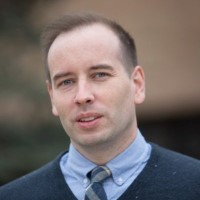Dramatic electronic changes occur when atoms are pushed just a few picometers in a crystal. These periodic lattice distortions that push and pull atoms by tiny amounts are often overlooked and require advanced higher-dimensional measurement using scanning / transmission electron microscopy to observe experimentally. In recent years, picoscale distortions are being engineered by slightly twisting two atomic sheets of atoms to access novel magnetic and quantum states. These small twist angle materials are not found in nature nature and give rise to remarkable torsional distortion fields that drive metal-insulator behavior and mechanical solitons. However, periodic atomic distortions can also emerge naturally with the spontaneous formation of charge density waves. Charge waves modulate the electron density with strong electron-lattice coupling. A new decade of electron microscopy enables understanding these materials at the picoscale and across billions of atoms
We introduce a new class of 2D materials, called endotaxial 2D materials, that host novel room temperature charge density waves. New evidence suggests that transformative correlated electron behavior may exist only in unrealized clean 2D materials such as 1T-TaS2. Unfortunately, experiment and theory suggest that extrinsic disorder in free standing 2D layers impedes correlation-driven quantum behavior. Here we demonstrate a new route to realizing fragile 2D quantum states through endotaxial polytype engineering. The isolation of truly 2D charge density waves (CDWs) between metallic layers greatly stabilizes charge density waves long-range order. We show the critical temperature for spatially-coherent CDW in 1T-TaS2 can be raised to well above room temperature (~150 K above the expected transition) by synthesizing clean interleaved 2D polytypic heterostructures. This stabilizes latent 2D ground states distinct from conventional 2D fabrication.
Event Details
Date/Time:
-
Date:Wednesday, March 27, 2024 - 2:00pm to 4:00pm
Location:
Howey Physics Building N110



